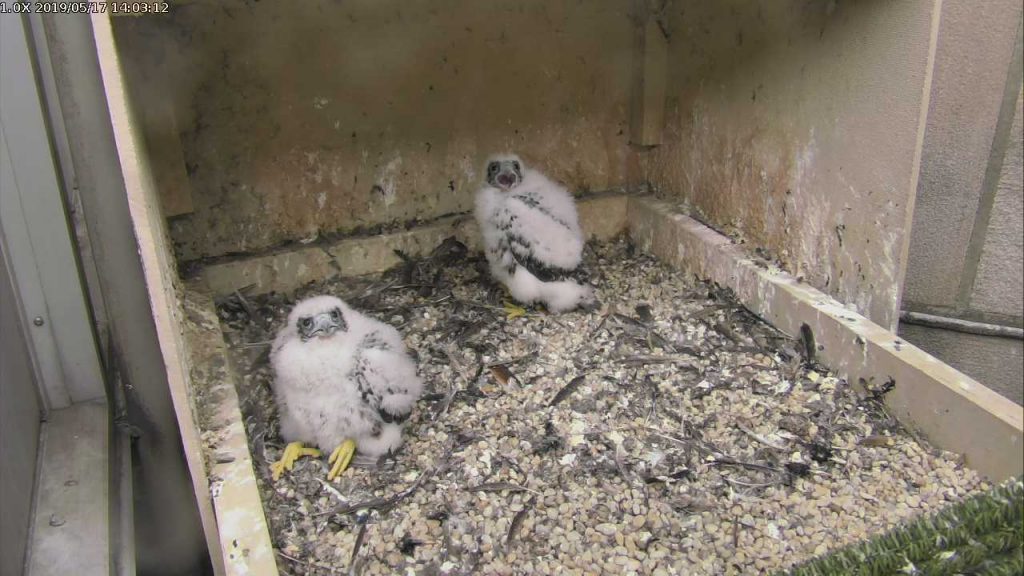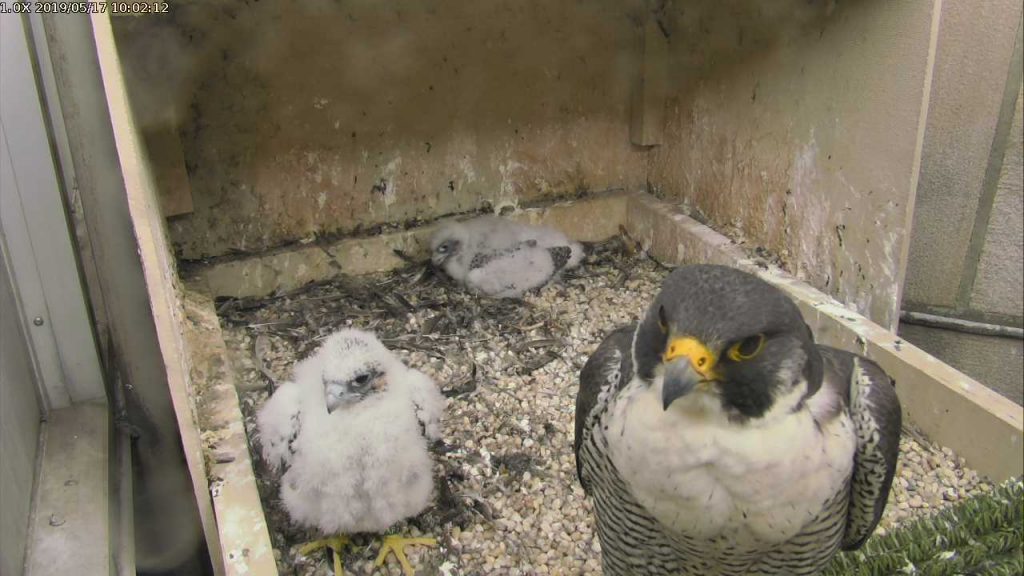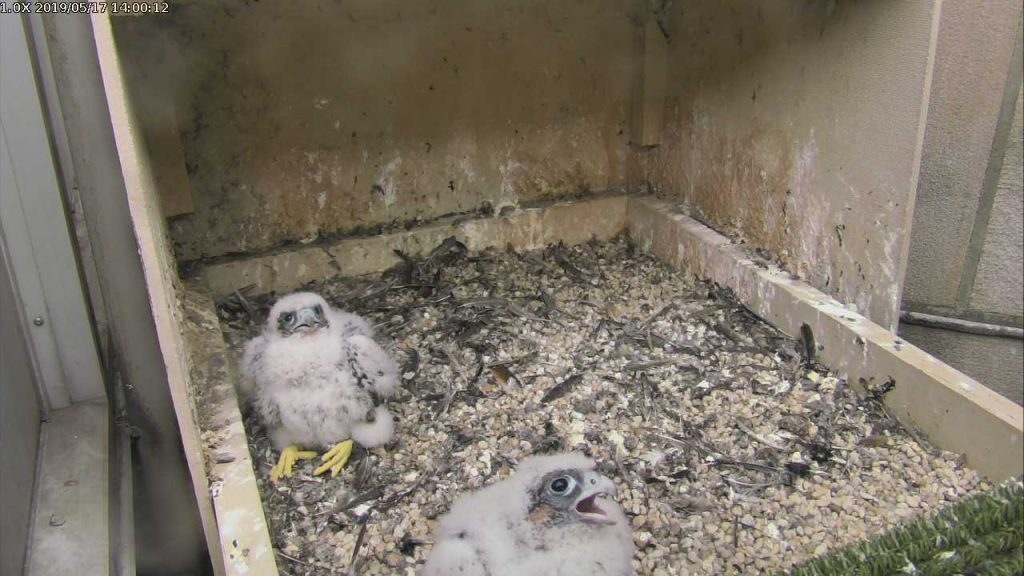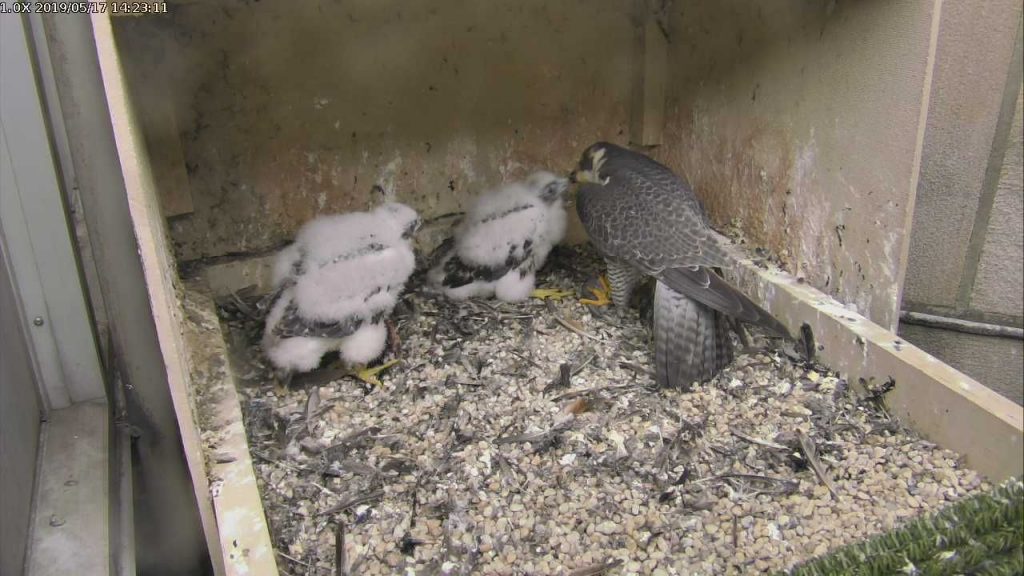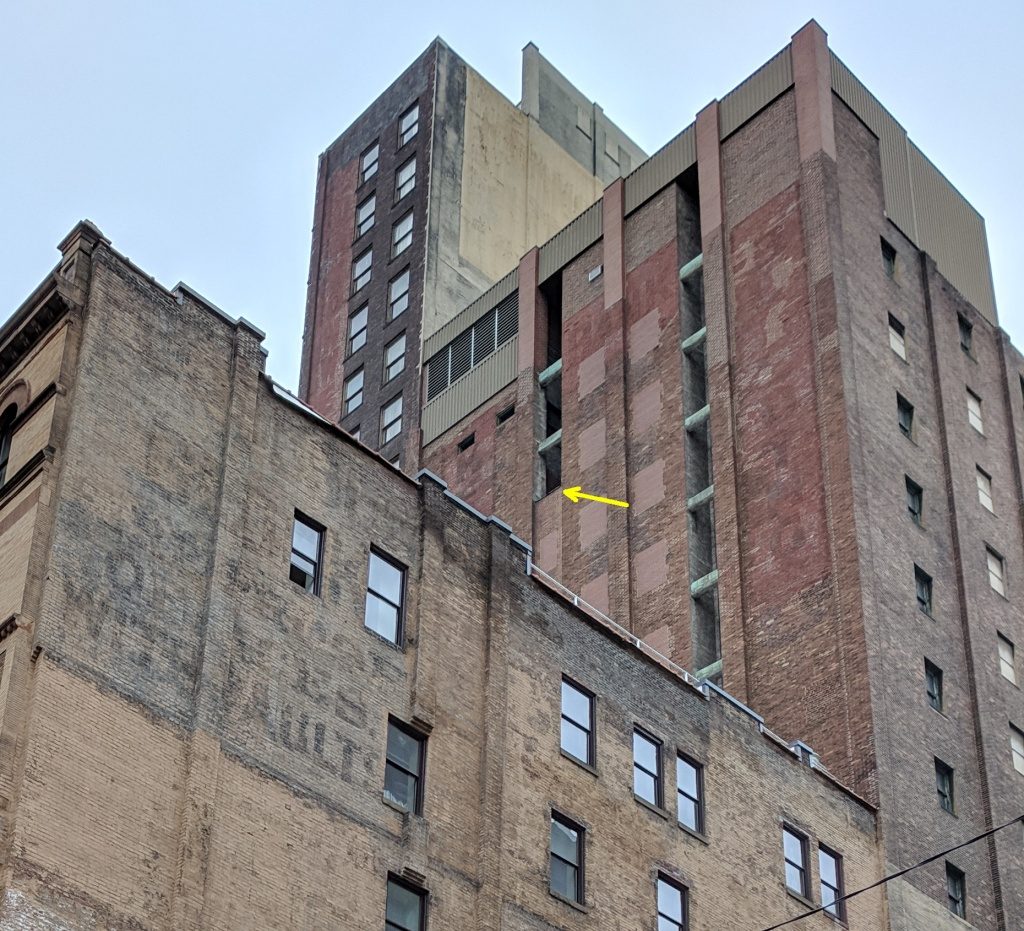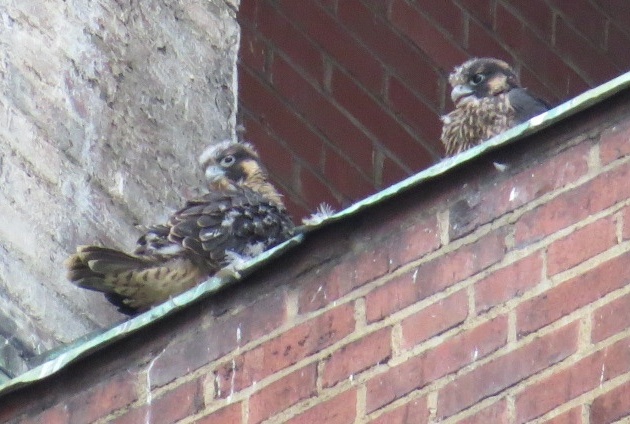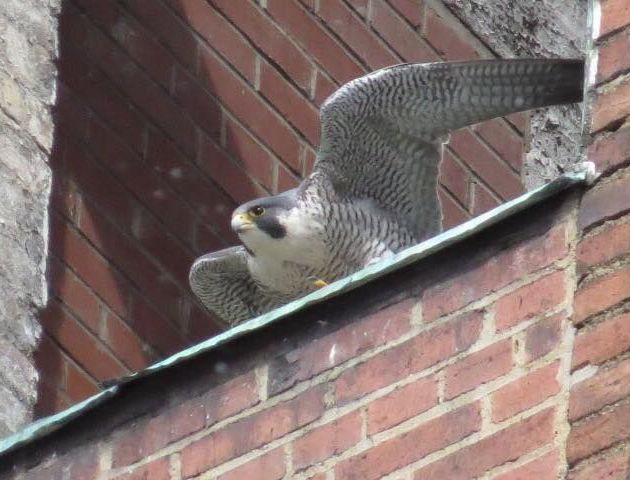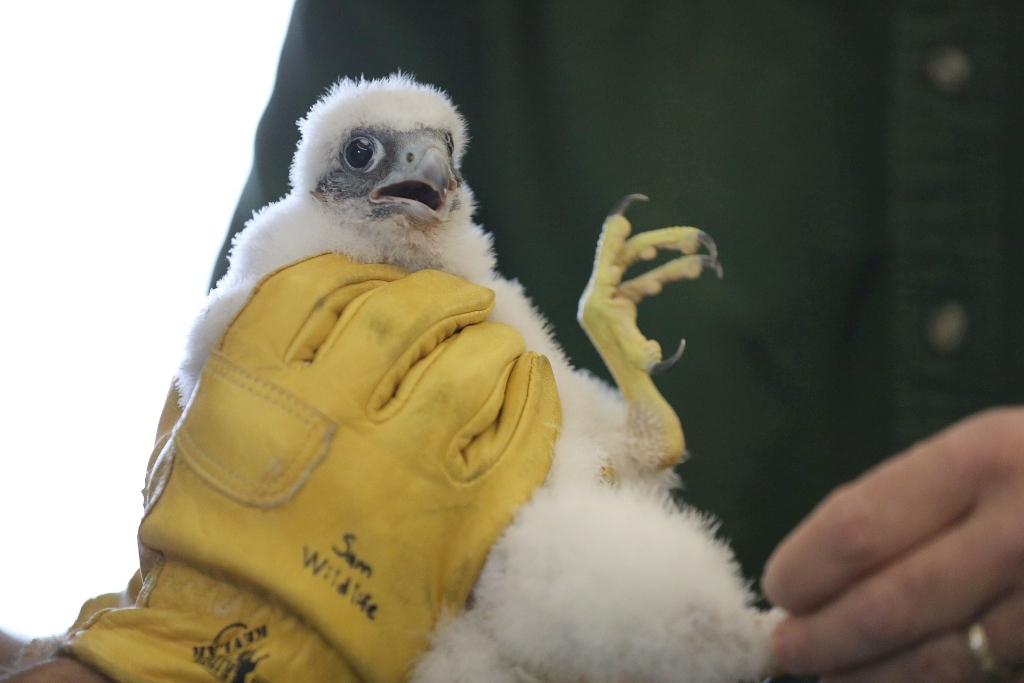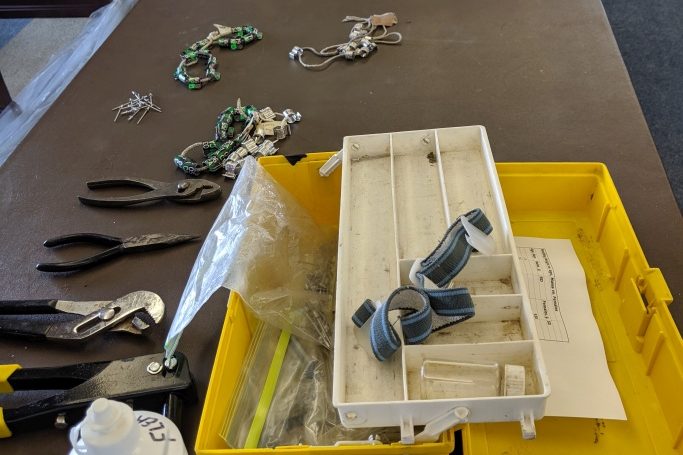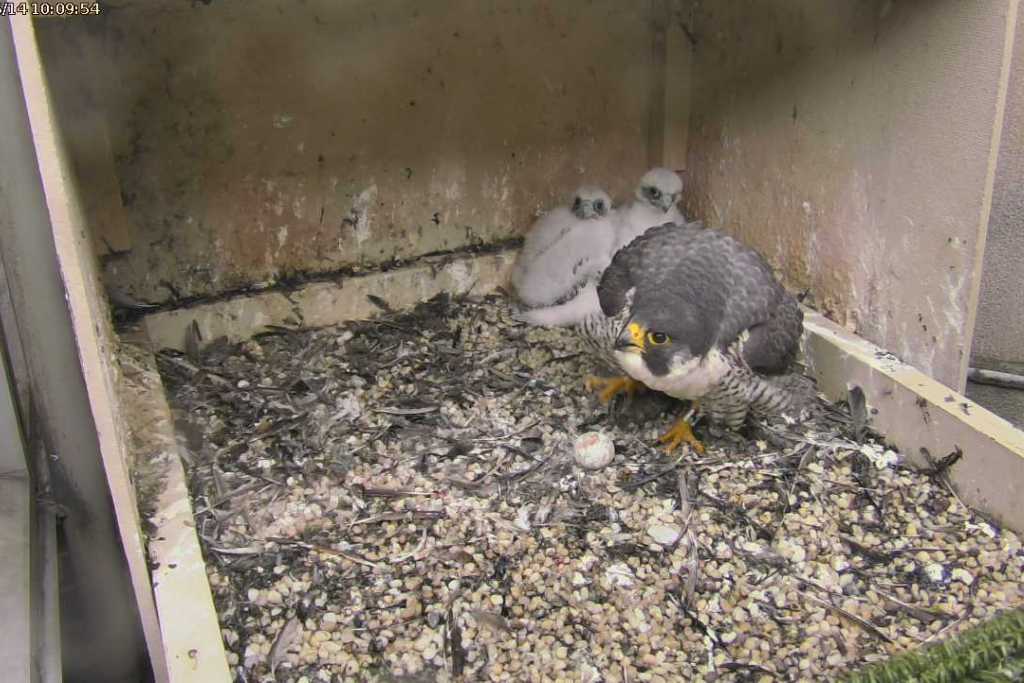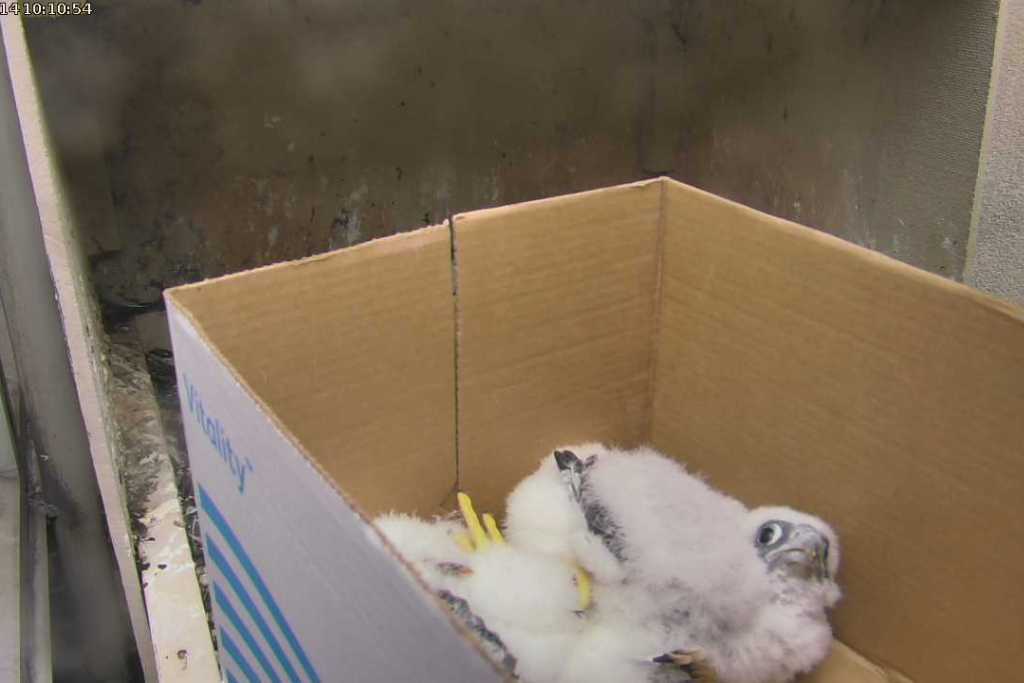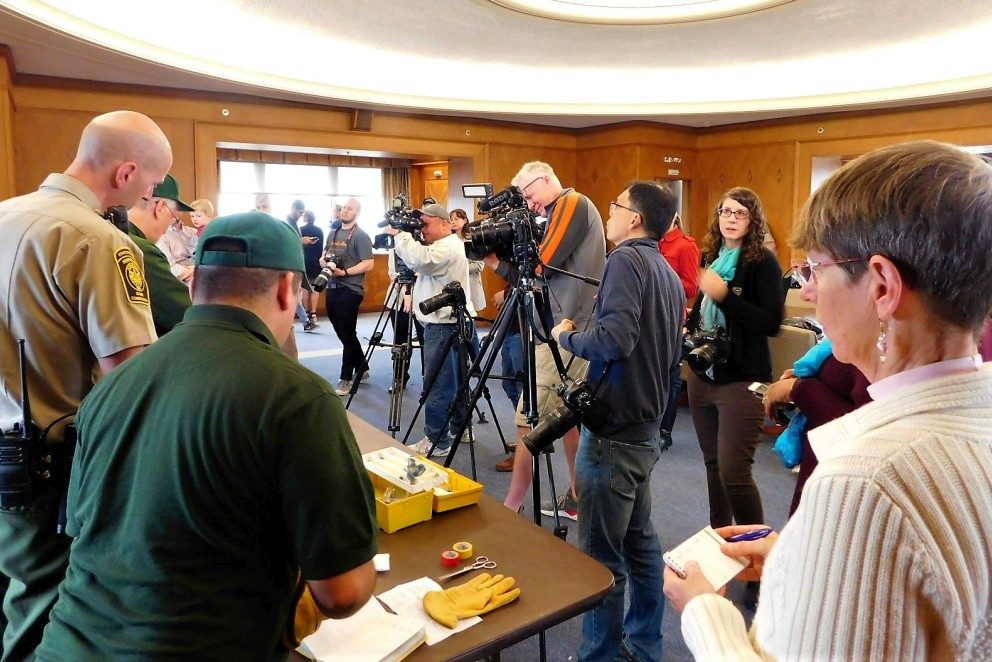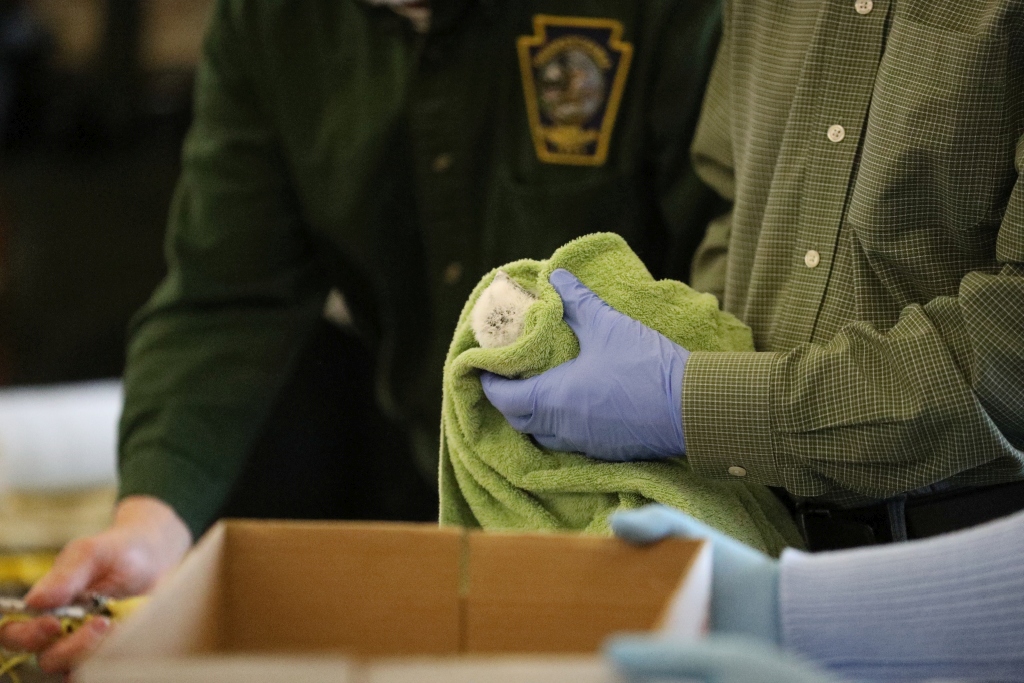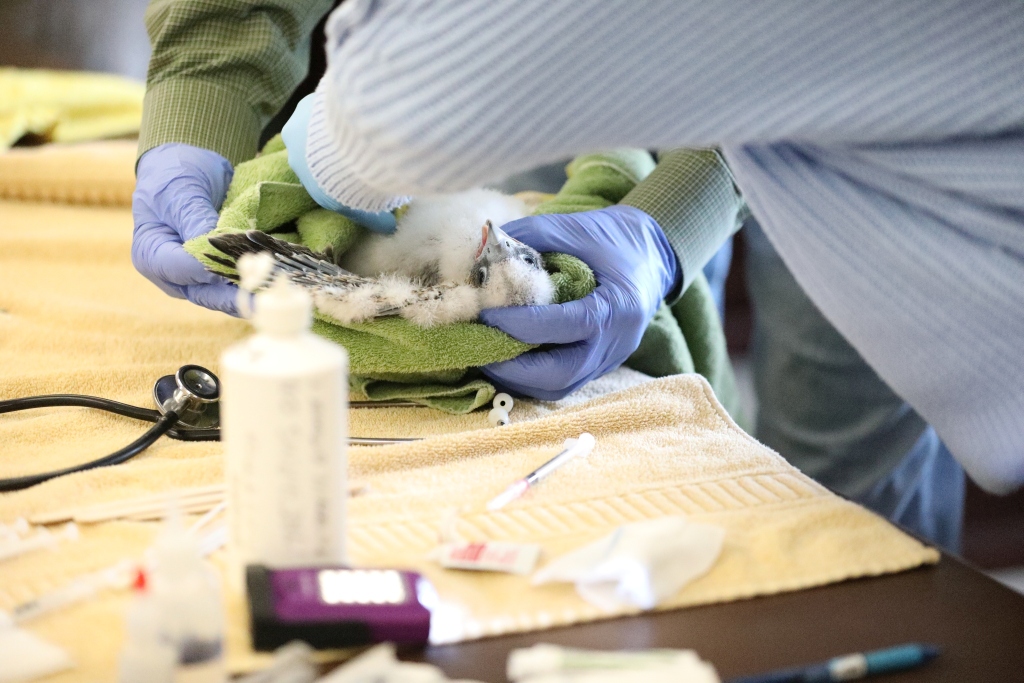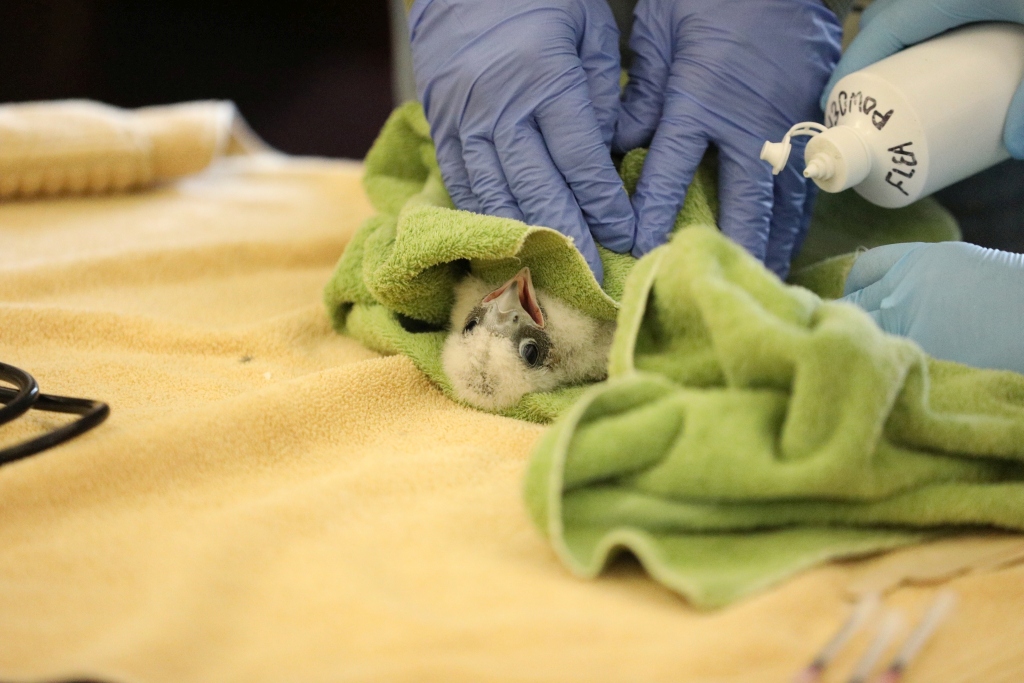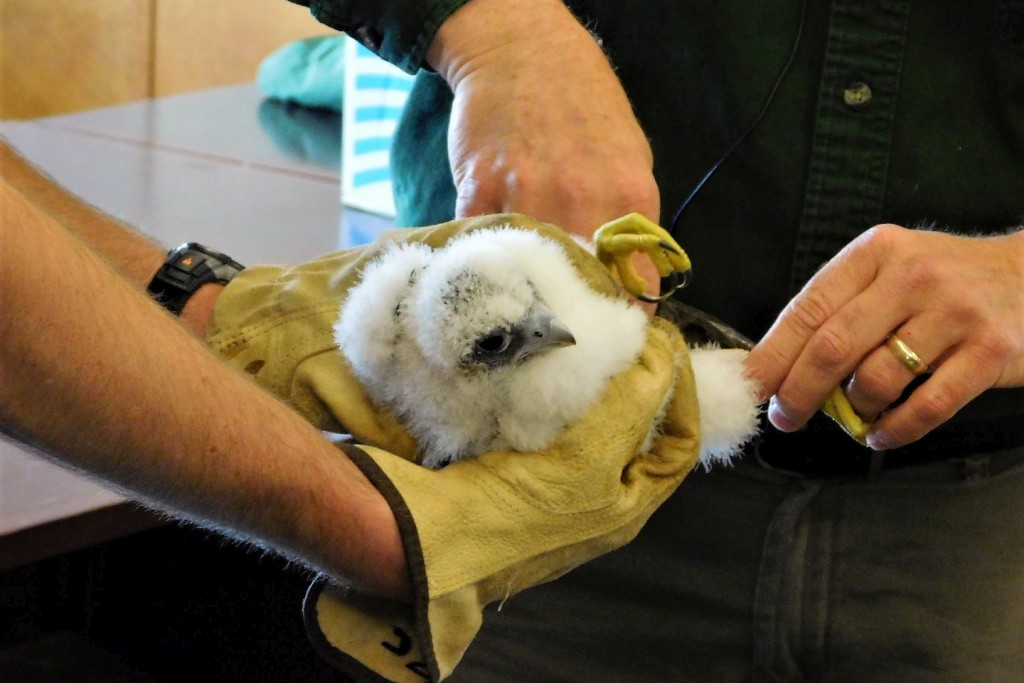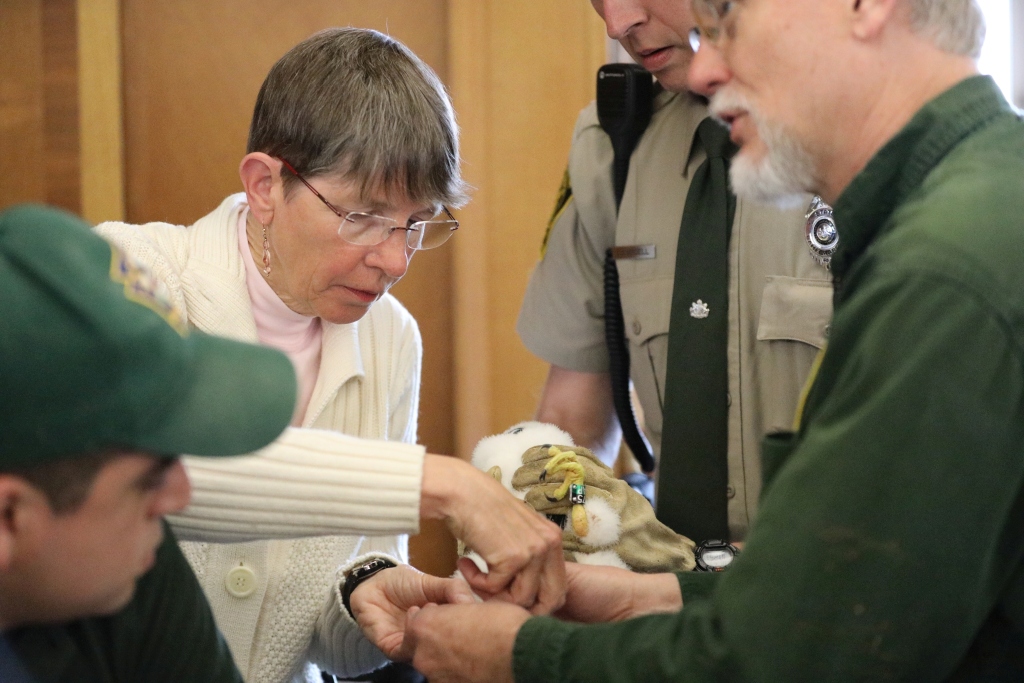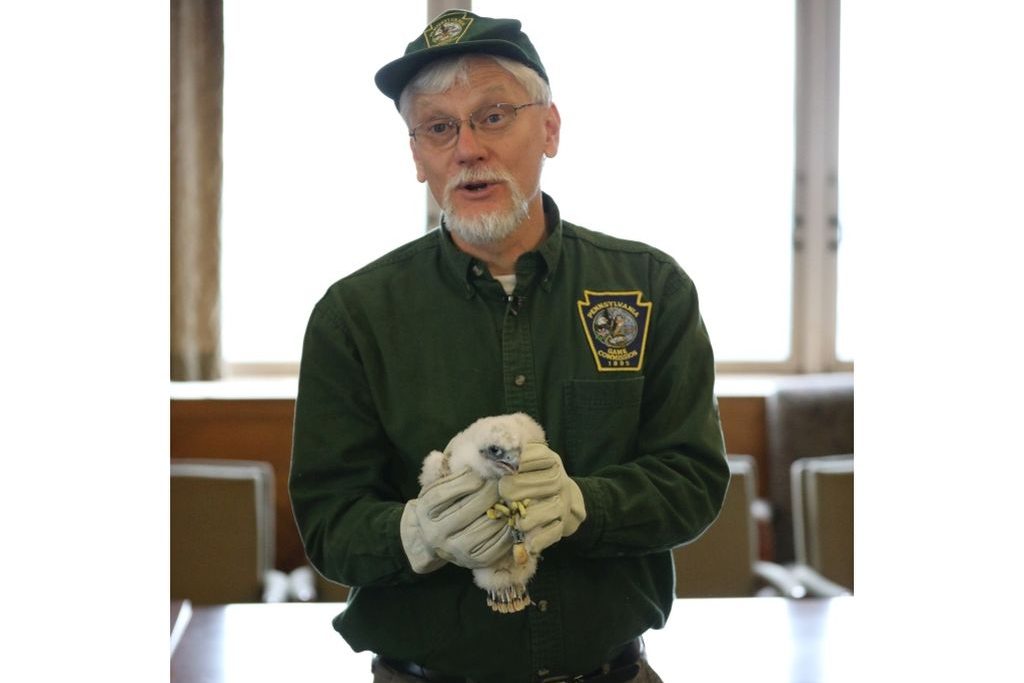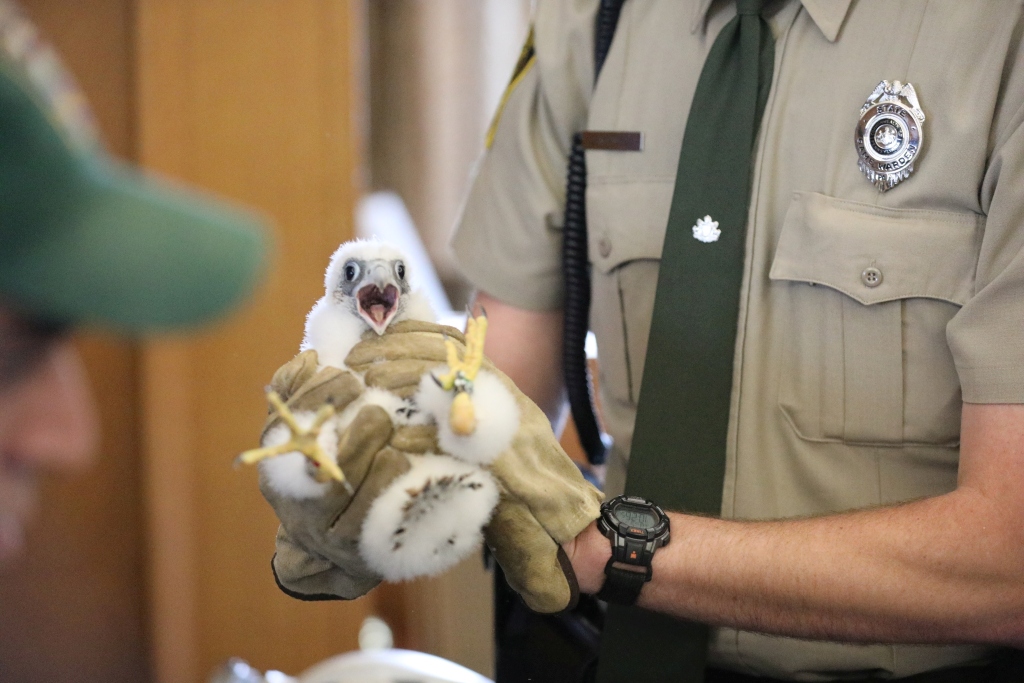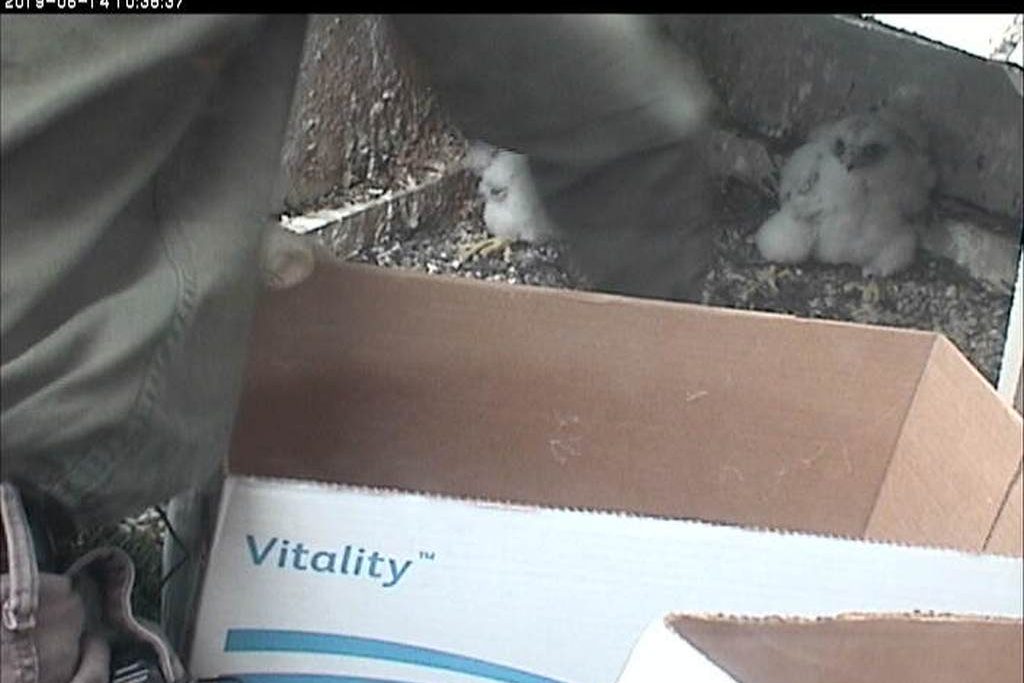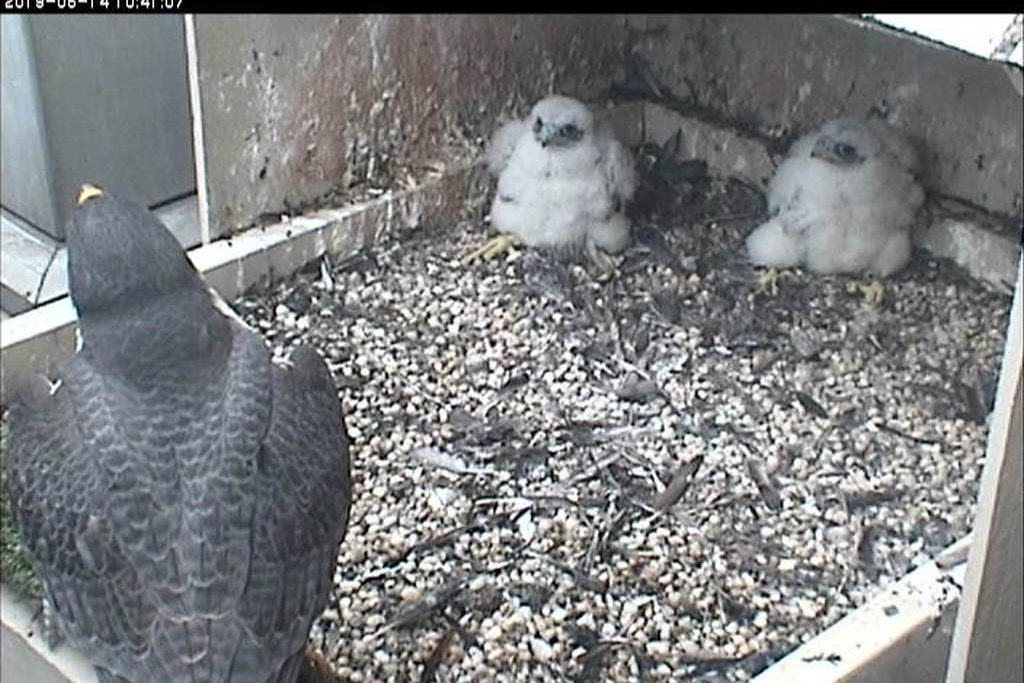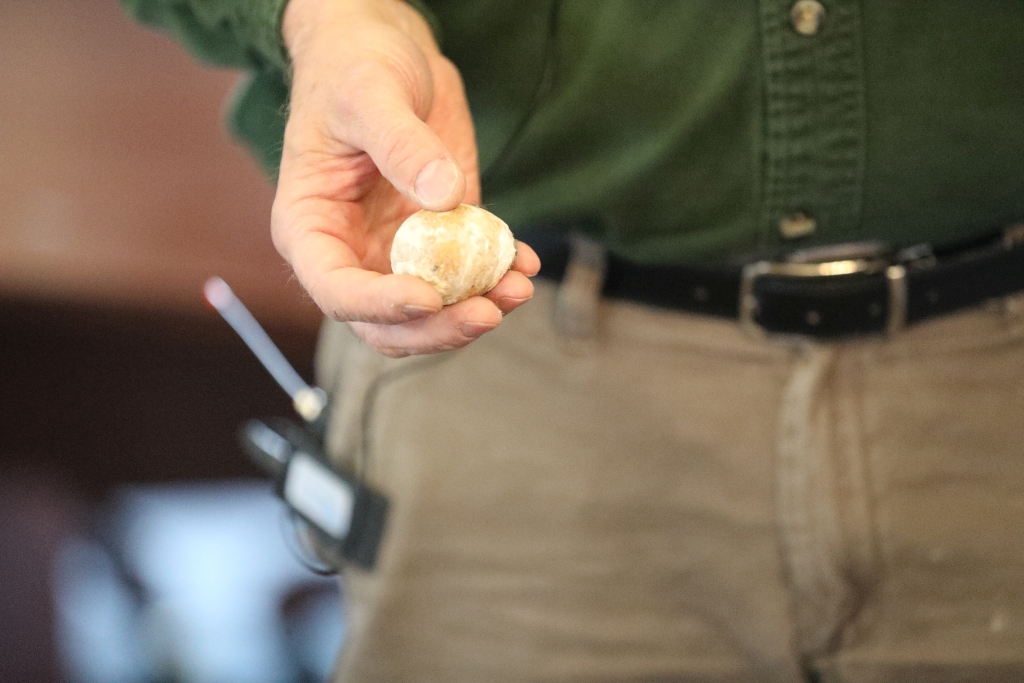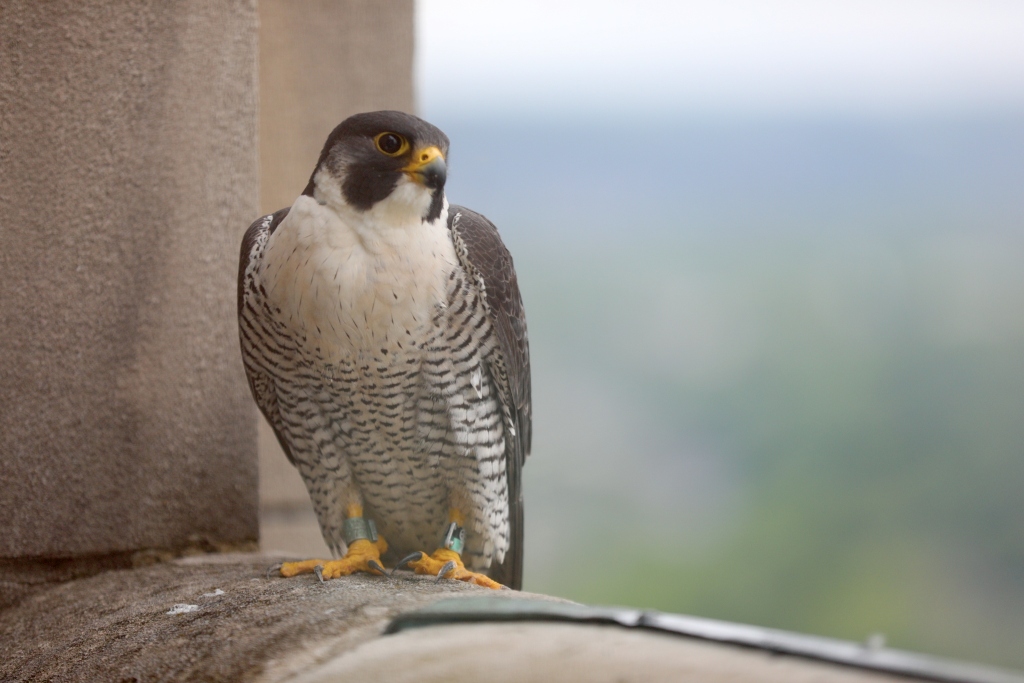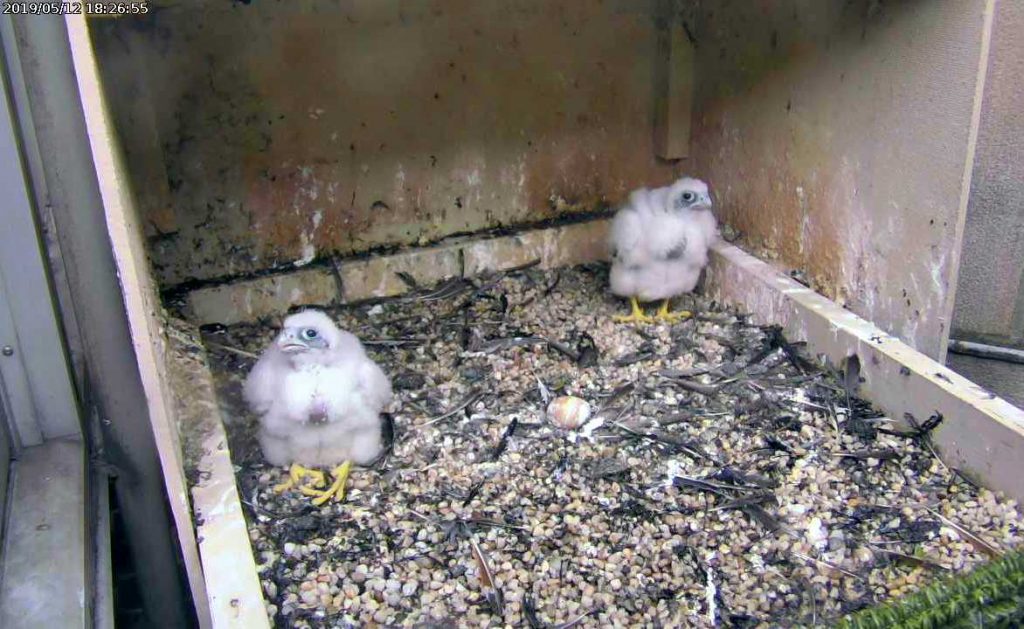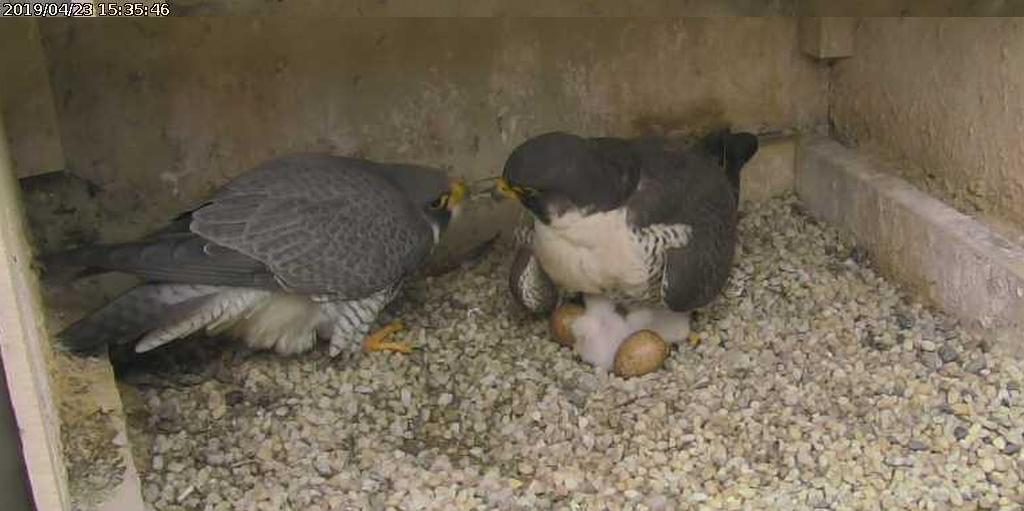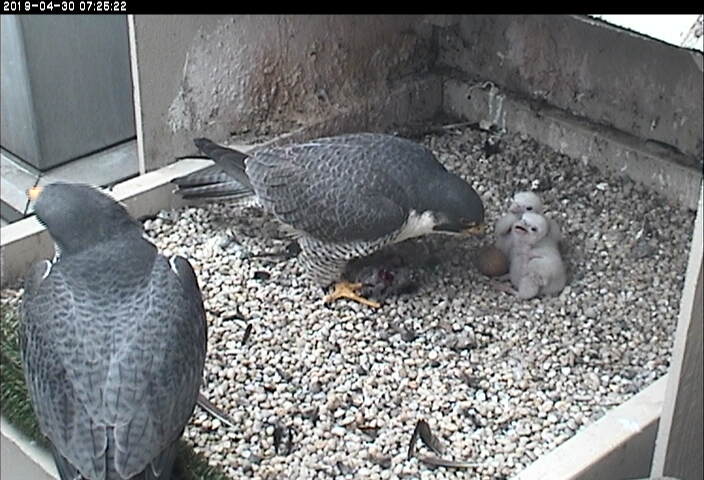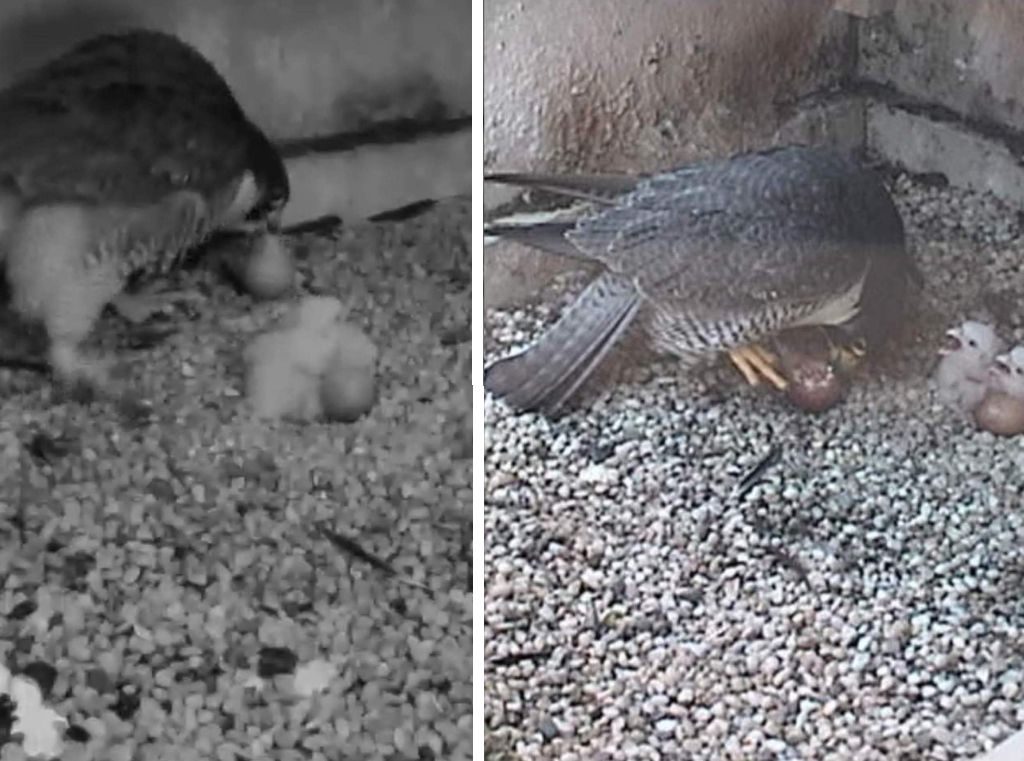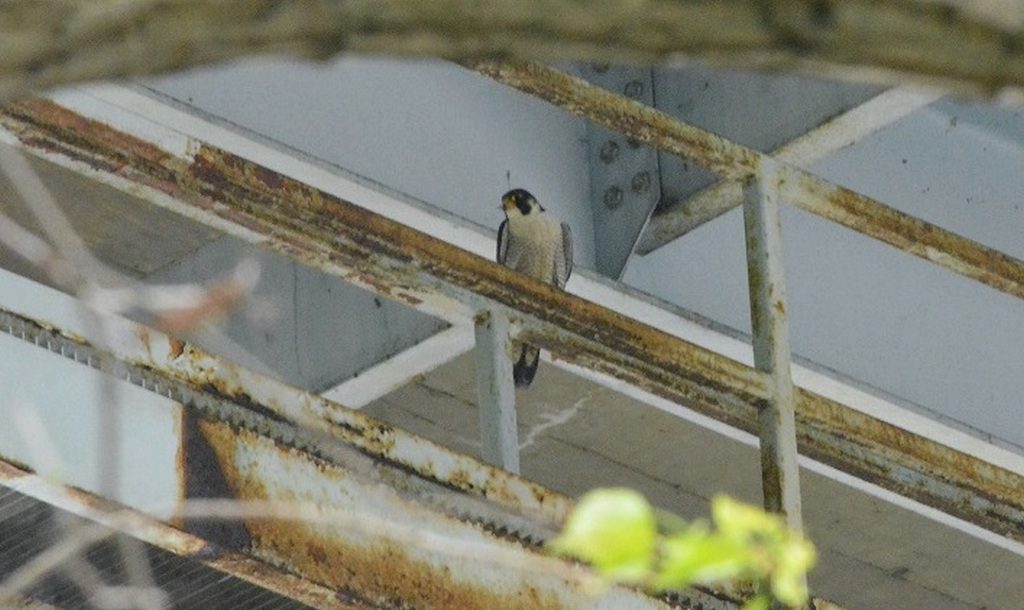
Peregrine season is in full swing in Pittsburgh. We have peregrine families at Pitt’s Cathedral of Learning, at Third Avenue in Downtown Pittsburgh, and on 7 or more bridges. Are the bridge nests successful? Help us find out. Watch these bridges.
Top Priority
Art McMorris, PGC’s peregrine coordinator, has news from some bridges but needs updates from four sites. Watch to see if peregrines bring food to the sites listed below. If they do, there are chicks in the nest. If they don’t, keep watching. Report your findings (yes or no) in a comment here. If you visit regularly I’ll send you Art’s contact information.
Neville Island I-79 Bridge (also called the Glenfield Bridge), Ohio River
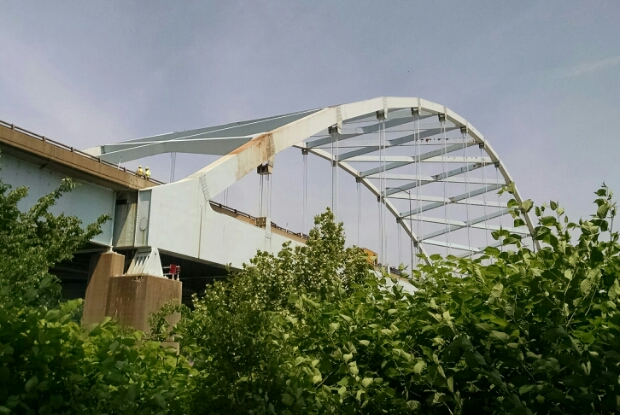
We know that peregrines are nesting on the Neville Island I-79 Bridge but we don’t know if their eggs have hatched. Stop by the best viewing area at the Fairfield Inn parking lot on Neville Island.
Ambridge-Aliquippa Bridge, Ohio River
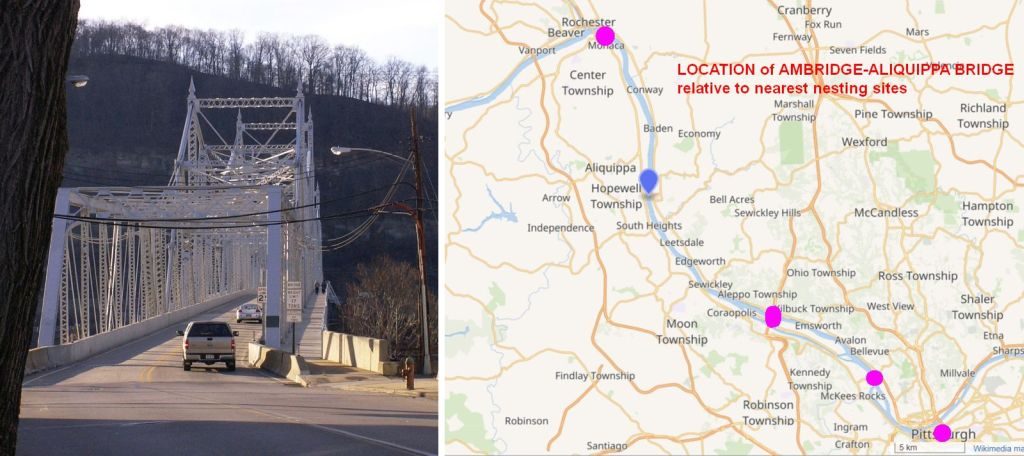
One or two peregrines have been at the Ambridge Bridge since last winter but only one has been seen in the past month. Are they incubating eggs? Stop by the Ambridge side of the river to view the bridge.
Monaca-Beaver Railroad Bridge -or- Monaca-East Rochester Bridge, Ohio River

A pair of peregrines usually nests in the Beaver, PA area but few people look for them. Check for peregrines on these two bridges: the Monaca-Beaver Railroad Bridge and the Monaca-East Rochester Bridge.
Route 422 Graff Bridge at Kittanning, Allegheny River

Peregrines have nested under the Route 422 Graff Bridge near Kittanning for many years but news is hard to come by. Stop by the best viewing area — under the bridge on the Armstrong Bike Trail — to check on their status.
Good News from Other Bridges
McKees Rocks Bridge, Ohio River

After the Pitt peregrine banding on 14 May 2019, PGC’s Dan Brauning and Sam Ruano stopped by the McKees Rocks Bridge to check for a nest and found 4 chicks too young to band. Dan estimates they were 12 days old so we expect them to fledge during the second week of June.
Tarentum Bridge, Allegheny River

This is the second year that an unbanded female peregrine with a dotted breast and a male peregrine banded black/green 48/BR have used the nestbox on the Tarentum Bridge. Susan Krouse saw the first food delivery on May 7 or 8. Tony Bruno reports noisy whining yesterday, May 19, by the mother bird (photo below). The chicks will probably fledge in mid-June. Watch them from the Tarentum boat ramp.
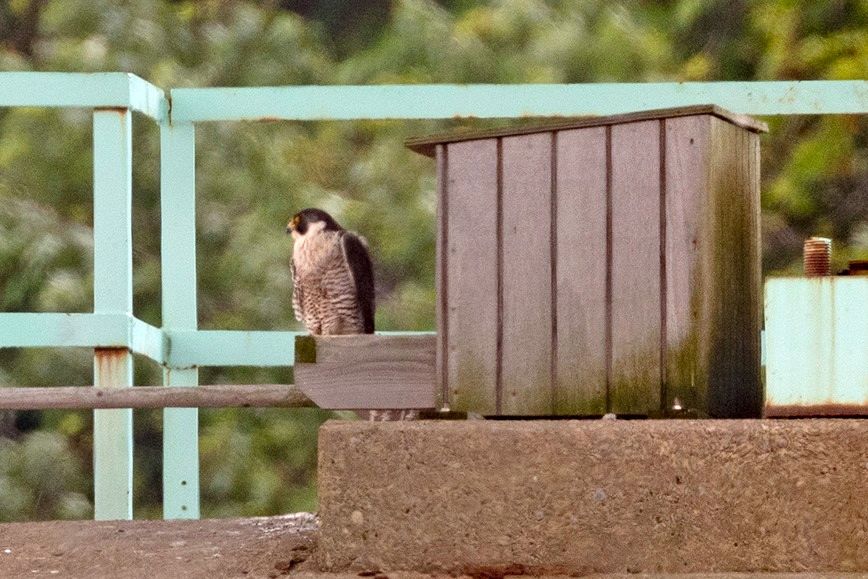
Westinghouse Bridge, Turtle Creek

John English reports that though he saw no peregrines at the Westinghouse Bridge yesterday, he certainly heard them! Begging calls from young and an adult whining. Stop by the bridge and you may be the first to see them.
No News from …
The remaining two bridges are unlikely to have nesting peregrines: Elizabeth Bridge over the Monongahela River (PennDOT covered the access holes) and the Hulton Bridge over the Allegheny River. Have you seen any recent peregrine activity at these sites? Let me know.
(see photo captions for the credits)
